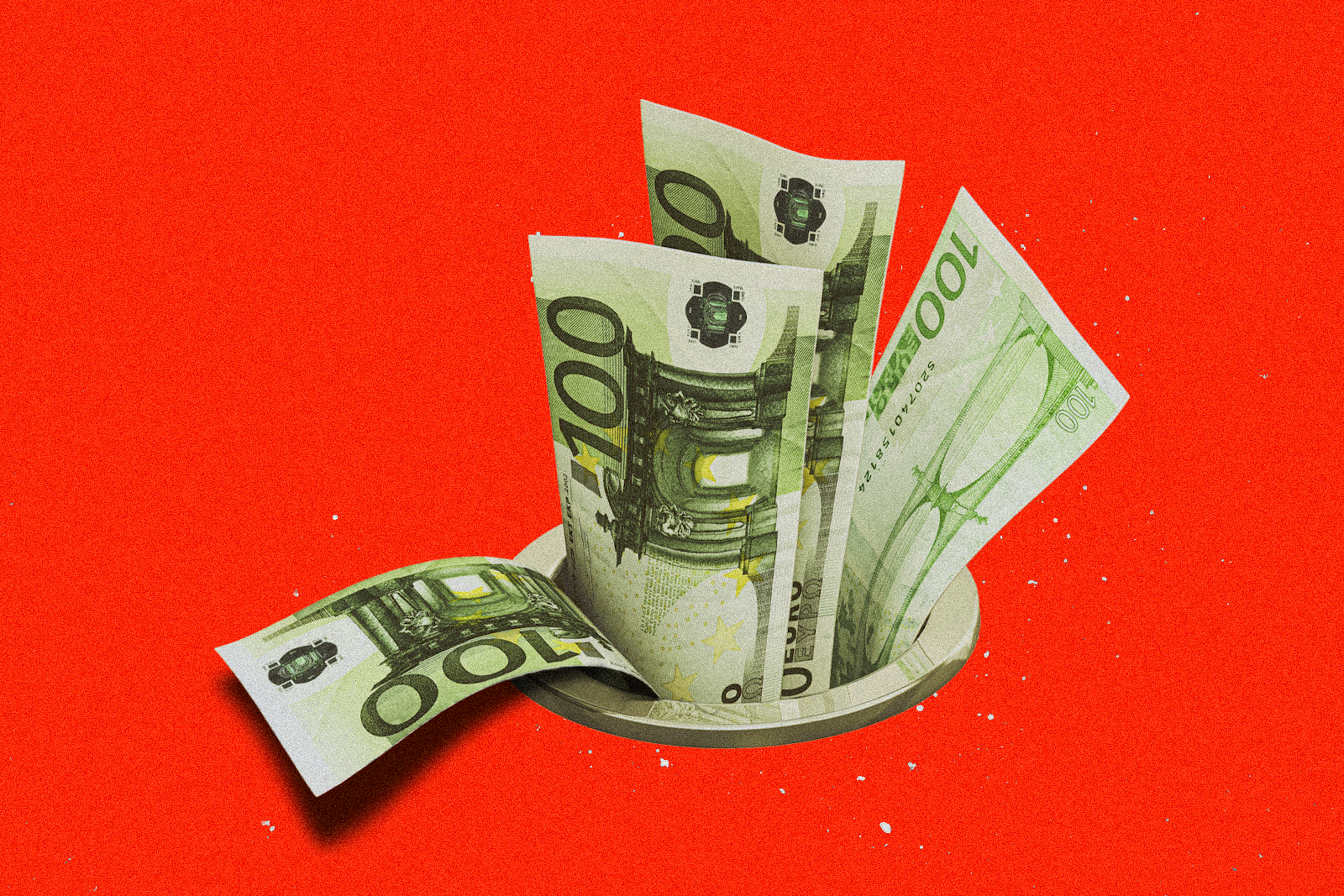
France, Land of Milk, Honey, and Subsidies
When comparing the government expenditures of France as a percentage of the gross domestic product with those of other OECD countries in 2021/2022, we see that France, with a figure of 59%, occupies the first place. The last place is held by Ireland at 24%. The United States stands at 45%, practically equal to the average of all OECD countries.
Thanks to this high figure, the French government can be generous with subsidies. Every year, the floodgates are opened, and a considerable amount of money flows to both businesses and individuals.
For example, French businesses received €157 billion in 2019. The population in that year was 65.1 million inhabitants, which means that per capita it comes to more than €2,400. In the Netherlands, the government spent €9.6 billion in that year on subsidies for businesses. That is €553 per capita.
Citizens also receive their blessings from the heavens. In this regard, the government does not seem to be stingy, as illustrated by some examples from the education and transport sectors.
While officially not part of the education system, the daycare system is largely organized and also subsidized by the government. The CAF (Caisse d’Allocations Familiales) is responsible for the actual organization. Parents pay an hourly rate based on their net monthly income and their number of children. For example, if their income is €1,600 and they have two children, their hourly rate is €0.83.
When children eventually go to school, there are indirect and direct subsidies. Thanks to indirect subsidies, schooling is free, both in primary and secondary education.
Direct subsidies are helping the parents to cope with the costs of paper and pencils, as well as the cost of an extensive afternoon meal served at school and transportation.
For paper and pencils, parents receive a subsidy of upwards of €435 for each child every year in September. The only condition is that the net income should not exceed €43,619 for a family with two children.
The meal at the primary school is usually paid by the municipality. In secondary education, parents have to pay on average €3.30 per meal. If this is financially challenging, the school’s social fund can be accessed. Additionally, in rural areas, there is often a €1 meal option.
Transportation to and from school is organized by municipalities, departments, and regions. While many systems involve costs for parents, some offer completely free transportation.
If there are still costs left for parents with limited income after all these subsidies, they can apply for a school grant. This pays out a quarterly amount ranging from €37 to €162, depending on family size and annual income.
Continuing education beyond secondary school doesn’t end the flow of subsidies. In broad terms, higher education is free. However, registration fees must be paid. The exact amount depends on the area of study, but never exceeds a few hundred euros. These registration fees are waived for the 655,000 students receiving a scholarship, which ranges from €1,454 to €6,335 per year and is largely dependent on the parent’s gross income. A scholarship is available up to an annual gross income of €101,347.
Scholarship recipients have another advantage: they are entitled to a student room for a modest sum of €100 per month or a studio apartment at a slightly higher cost.
Students are entitled to a meal (appetizer, main course, and dessert) in university restaurants for €1 or €3.30 (depending on their financial situation). Additionally, all students are eligible for a significant discount on public transportation. Some cities, including Valenciennes, even provide free public transportation for students.
These basic schemes are complemented by various specific regulations. There is Emergency Aid of up to €6,335 per year and a subsidy of €900 to €1,800 per year for those who have excelled in their high school graduation.
Greater Paris has over 10 million inhabitants, and for these residents, €10.5 billion is allocated annually for public transportation. This amounts to €1,050 per person per year in indirect subsidies. This example illustrates that subsidy streams significantly impact public transportation. However, individual transportation subsidies are even more interesting.
The purchase of an electric car essentially qualifies for a subsidy. As of February 2024, the subsidy amount is €7,000 for individuals with modest incomes and €4,000 for those earning more. There are some restrictions; the purchase price must be less than €47,000, and the subsidy is not valid for just any electric cars, with Chinese cars largely excluded.
If an old car is traded in, an additional subsidy of €5,000 is possible for buyers with modest incomes. If the buyer resides in a designated ZFE (low-emission zone) region, the €5,000 can be increased by €1,000 to €2,000. In the best-case scenario, a total subsidy of €14,000 can be obtained.
Those who prefer leasing over buying can avail of “leasing social.” Leasing an electric car becomes possible for a low monthly amount. For a Hyundai Kona, the monthly rate is €95, and a Jeep Avenger costs €149 per month. However, it can be cheaper; a Renault Twingo is available for €40 per month.
“Leasing social” has certain conditions. The commuting distance must be more than 15 km, and the income must not exceed a specific limit. The limit for a family of two parents and two children is €46,200 per year.
If one favors a bicycle over a car, subsidies are also available. The subsidy for a regular bike is €150, for an electric variant, it’s €400, and for a special edition of an electric bike, such as a folding bike, the amount can go up to €2,000. These subsidies apply to both new and used bikes. In addition to national bike subsidies, there are also various regional and local subsidies. For example, a resident of Paris can receive an additional subsidy of €400 for their e-bike from the region and another €400 from the city itself. In Grenoble, this is slightly lower: €750.
In August 2023, the aforementioned subsidy for the purchase of paper and pencils was increased from €398 to €435 per child per year. The comments from various federations of parents with school-going children were unequivocal. They found the increase completely insufficient.
The same sentiment was shared by parents in the municipality of Bouyon, where in August 2023, the rate for the school cafeteria was increased by €0.90. BFM TV gave it considerable attention and also interviewed the mayor. He explained that the last increase dated back to 2008.
It seems that the French government has a pathological tendency to distribute subsidies to a population addicted to these subsidies, in short, a French disease.
Is there really sickness and addiction? Let’s answer that question using the “leasing social,” the subsidy scheme where you can lease an electric car for €40 per month.
France has an unhealthy national debt that continues to increase in both absolute and relative terms. The projected deficit for 2023 is likely to be 5% (of the gross domestic product), and the national debt is now approaching 112%.
With this macroeconomic backdrop, it is irresponsible that the government introduced “leasing social” in January. A month later, 50,000 applications were already accepted, and the scheme was halted for the rest of 2024. The estimated cost is €13,000 per car, totaling €650 million. This means an additional €650 million in deficit.
Furthermore, the effect of the scheme seems irresponsible. Someone who previously commuted to work by bike, with a neighbor, or by public transport is now encouraged to opt for a car, as the costs have become ridiculously low. The scheme thus encourages unnecessary consumption.
Moreover, the scheme is not truly fair. After two months, it was already stopped, meaning many people could not benefit from it.
In conclusion, the answer is yes, there is indeed sickness and addiction.

